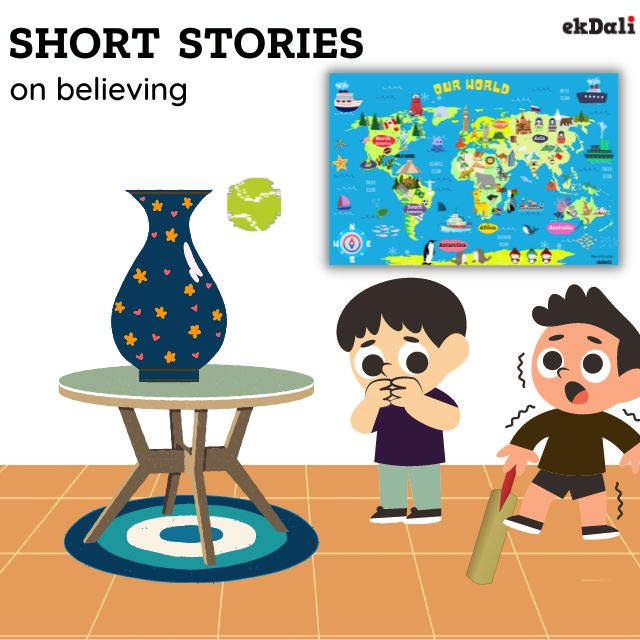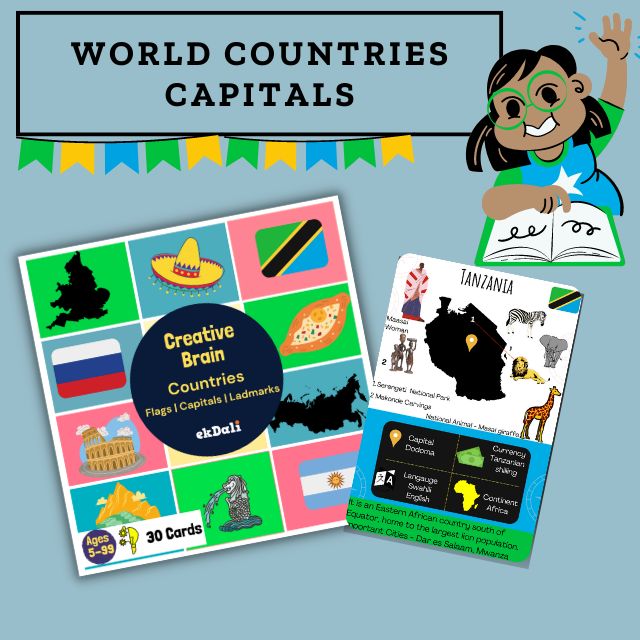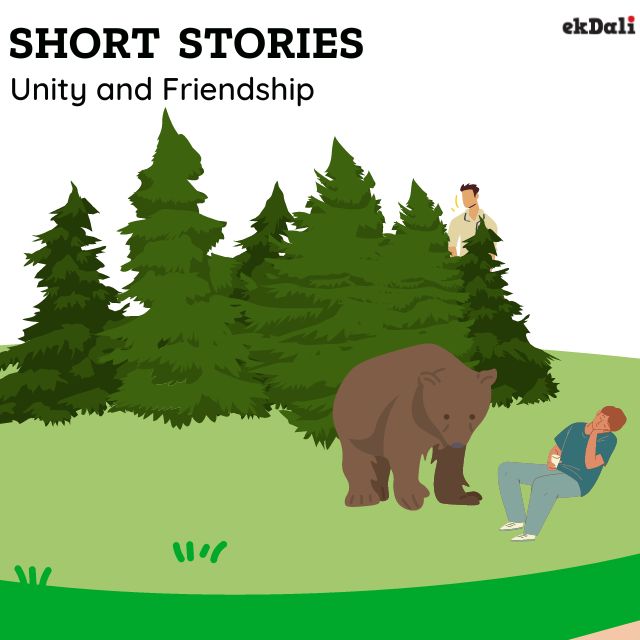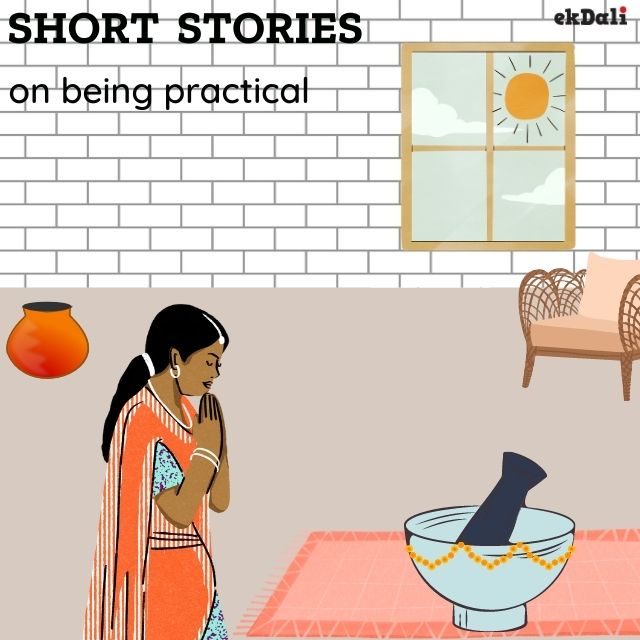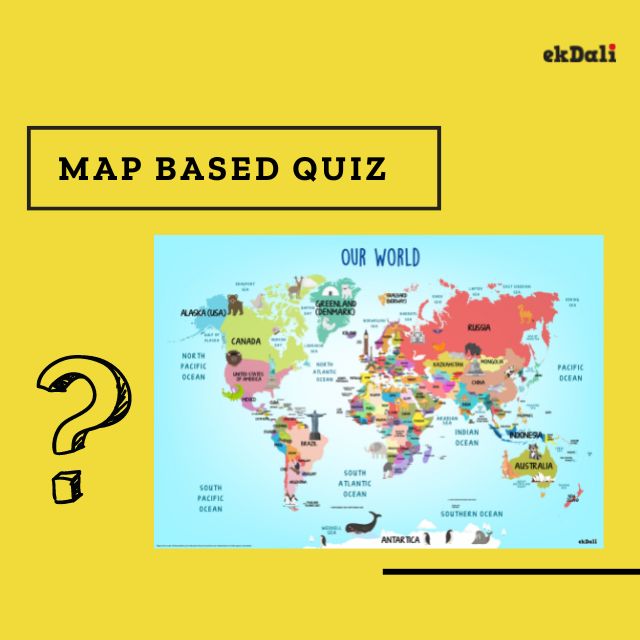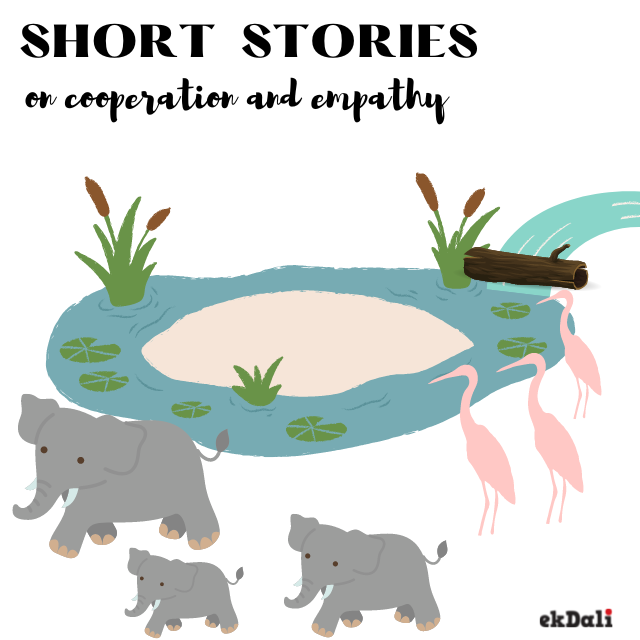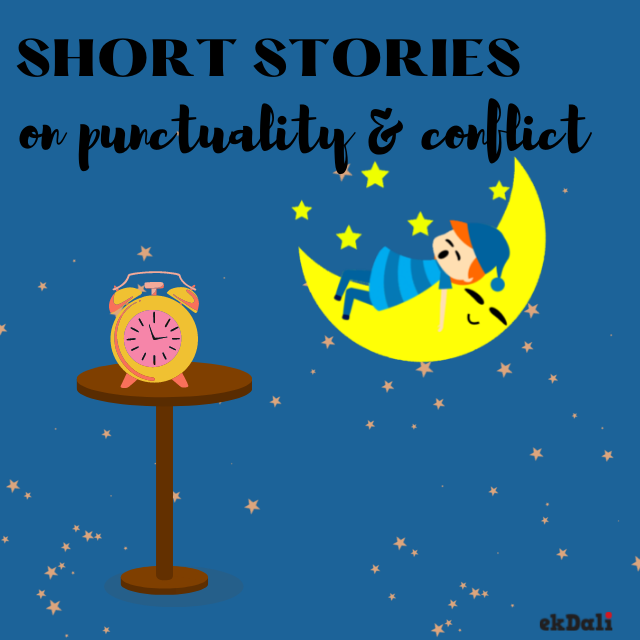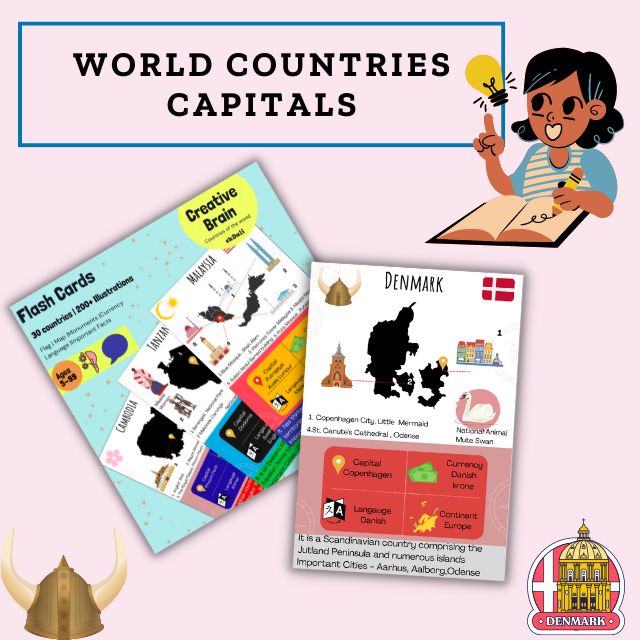The Above Flashcard is from the Creative Brain World Countries Flashcards box
DENMARK FACTS FOR KIDS
Denmark is a Scandinavian country comprising the Jutland Peninsula and numerous islands.
QUICK FACTS
|
Official name: Denmark |
|
Capital: Copenhagen |
|
Official Language: Danish |
|
Currency: Krone |
|
Continent: Europe |
|
Population: 5.91 million |
|
Major rivers: Gudena, Nayhavn, Stora |
|
Major Cities: Esbjerg, Roshkilde, Aalborg |
|
National Bird: The Mute Swan |
|
National Tree: European Beech |
|
National Flower: Marguerite Daisy |
|
National Fruit: Strawberries |
GEOGRAPHY AND CLIMATE
Denmark is a terrain. It has flat lands and gently rolling plains. Denmark’s coastline is extraordinarily long for a country of this size. It consists of approximately 400 islands.
Denmark has a temperate climate marked by relatively cool summers and moderately cold winters. The average temperatures range from 32°F in February to 61°F in July. Rain in Denmark comes regularly year-round.
PEOPLE AND CULTURE
The people residing in Denmark are known as Danes. Danes are an ethnic German group, typically North German, native to Denmark.
People here are well-educated and open-minded. Equality is a keyword in Danish culture. The country has a liberal, tolerant and egalitarian stance which welcomes all races, ethnicities, and orientations.
Caring, freedom, generosity, honesty, health, income, and good governance make Denmark one of the happiest countries in the world.
THE FLAG
The national flag of Denmark is red with a white Nordic cross. The white cross represents Christianity, and the red background is symbolic of battle. The colors red and white have also been used by the kings of Denmark for thousands of years.
FLORA AND FAUNA
Denmark is home to 30,000 species of animals and plants. Oak and beech are indigenous to Denmark. While spruce, alders, pine, fir, birches, and maple are commonly found here. Indigenous species of Orchids, Lilies, Daisies, and Roses bloom year-round.
Mammals include several deer species including roe, red and fallow, foxes, hares, squirrels and as well as different amphibians and reptiles such as frogs, salamanders, geckos, and a few snakes. There is also abundant bird life, including passerines, wading birds, birds of prey, ducks, and swans. Hundreds of thousands of starlings gather in southwestern Denmark to migrate.
POPULAR SPORT
Football of course! The most popular sport in Denmark is football. Handball, esports, cycling, sailing sports, badminton, ice hockey, swimming, and American football are other sports commonly played.
Popular monuments and Landmarks
Copenhagen city, the little mermaid: Arguably one of Copenhagen's most iconic tourist attractions. The Little Mermaid is a bronze statue by Edvard Eriksen, depicting a mermaid becoming human. The sculpture is displayed on a rock by the waterside at the Langelinie promenade in Copenhagen. It is 1.25 meters tall and weighs 175 kilograms.
St. Canute’s Cathedral: St. Canute's Cathedral also known as Odense Cathedral, is named after the Danish king Canute the Saint. It is a red brick building constructed in the 1300s.
Oresund Underwater Bridge: It is a joint motorway and railway bridge tunnel. The magnificent structure is known for its architecture.
Products related to this post:












